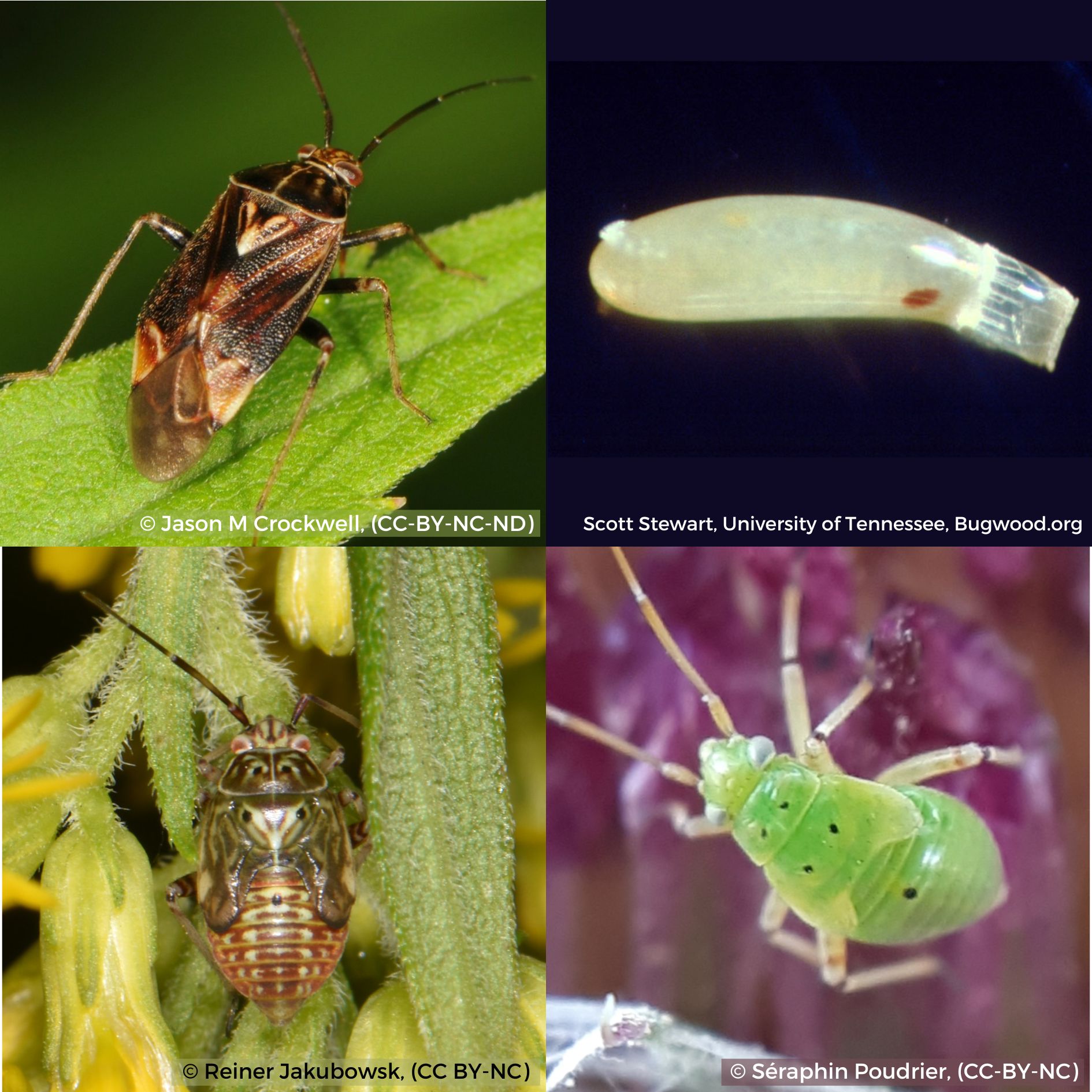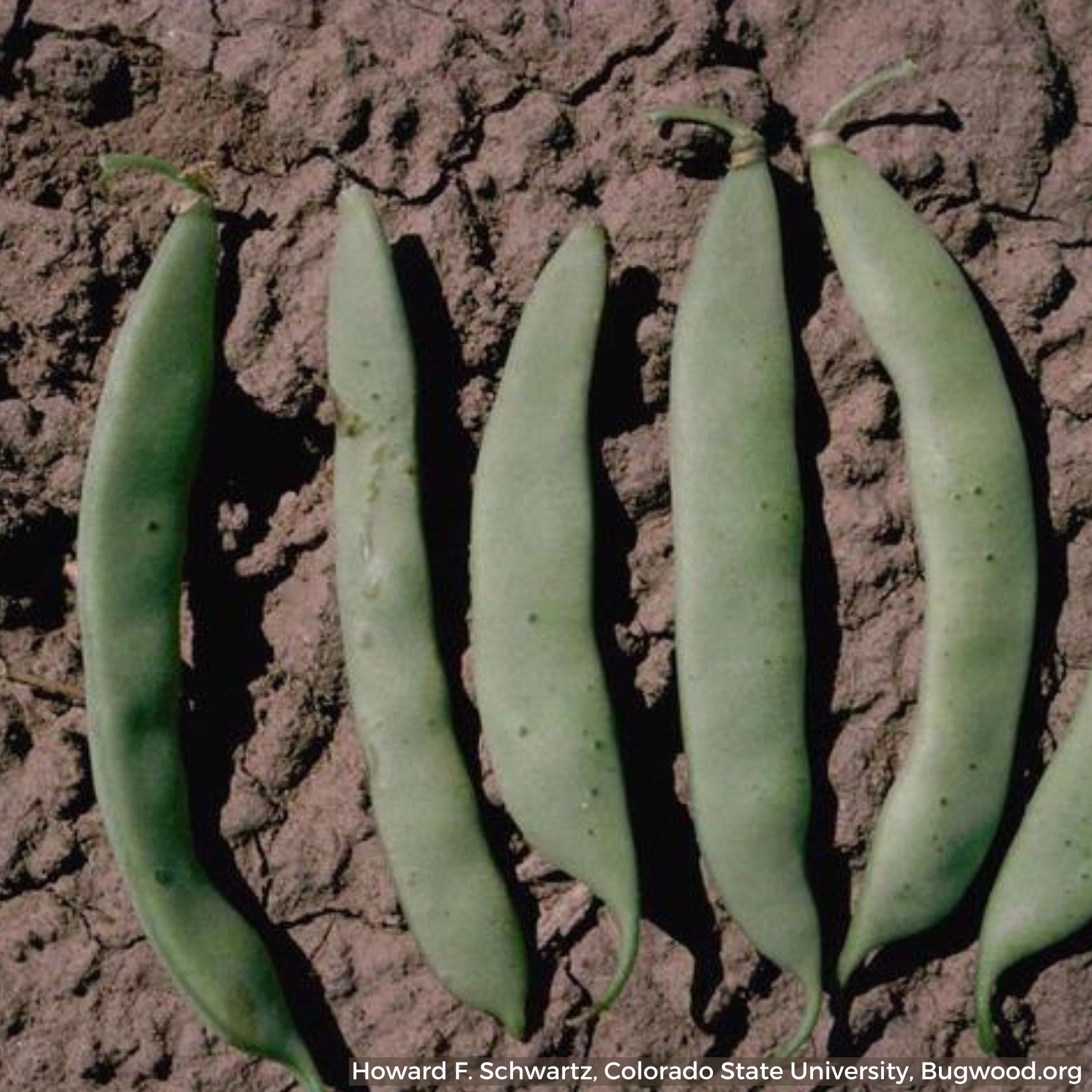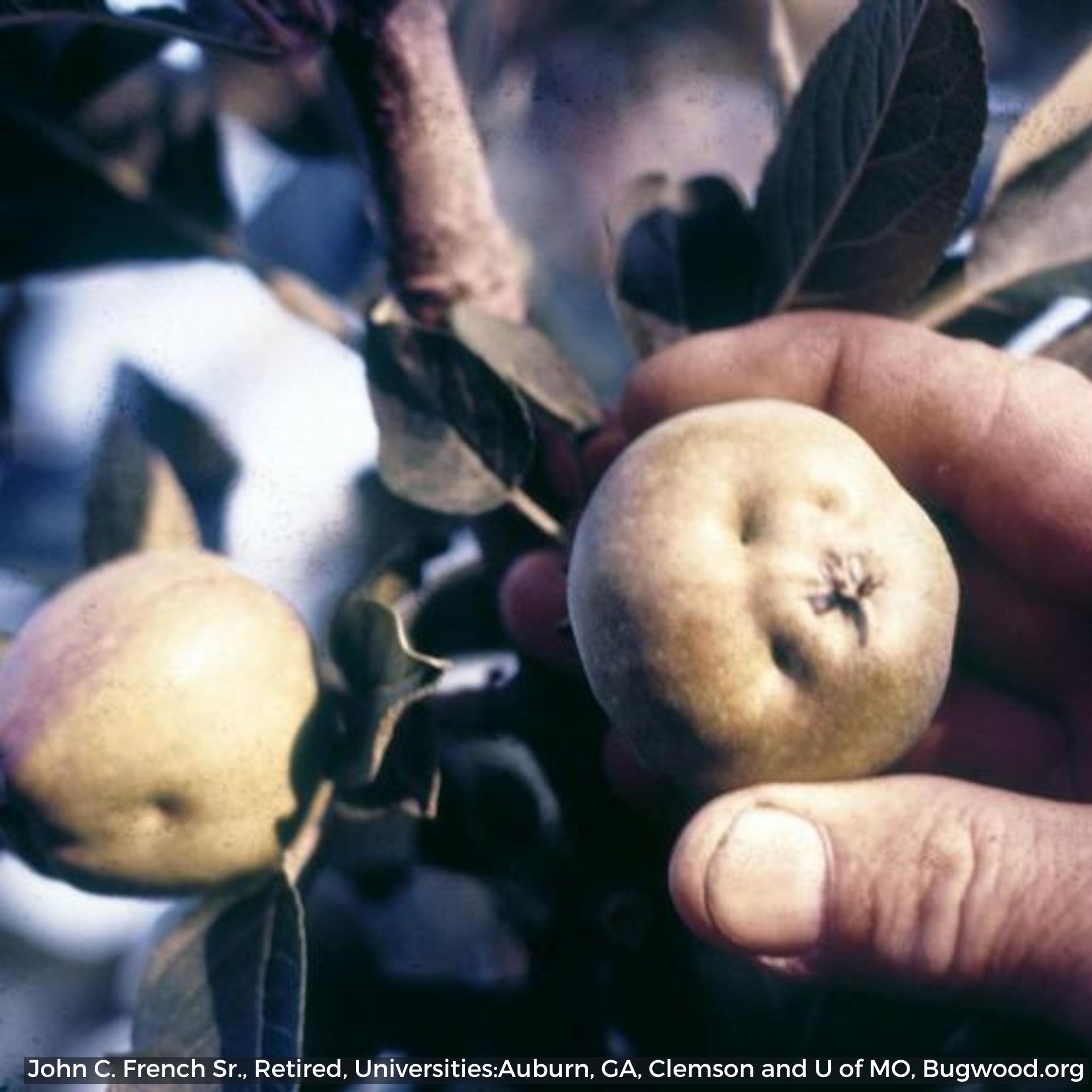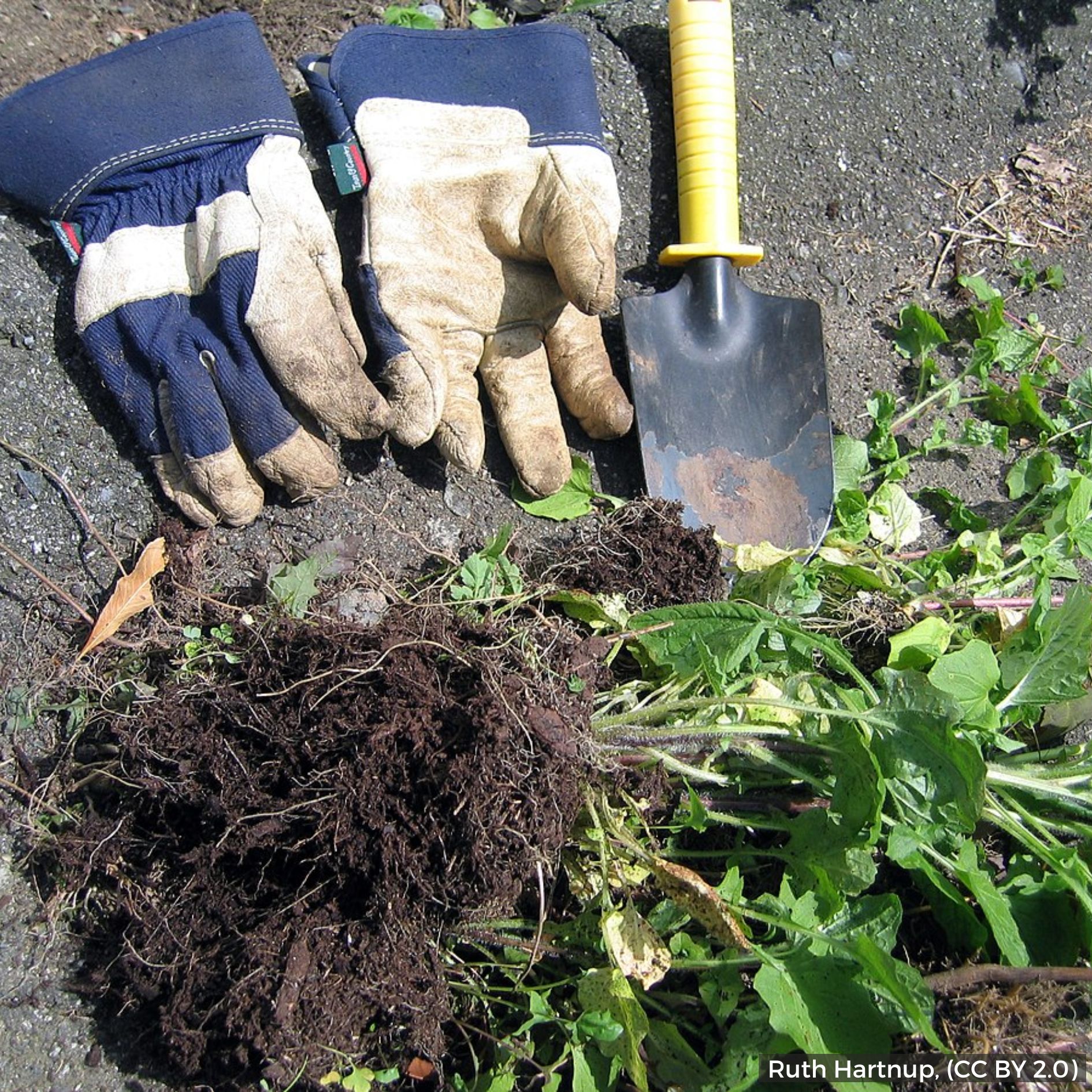Lygus Bugs (Tarnished Plant Bugs)
HOSTS
- Beans
- Lettuce
- Peas
- Potato
- Tomato
- Lettuce
DESCRIPTION
Both the tarnished plant bug (Lygus lineolaris) and western tarnished plant bug are (lygus hesperus) are present in Utah. Adults are brown with yellow, black, and red markings and have a yellow or green triangle on the upper center of the back. Nymphs are usually lighter in color with dark spotting and a more rounded form.
BIOLOGY
Egg | Nymph | Adult- 3-4 generations per year.
- Overwinter as adults in plant debris.
SYMPTOMS
Adults and nymphs feed on plant cells (not sap) with piercing-sucking mouthparts. Feeding on seeds causes them to shrivel and heavy feeding on flowers may cause bud drop or flower abortion. Symptoms on foliage have not been documented.
SCOUTING
Visually scout plants or use a sweep net in nearby weeds and regularly examine flowers to monitor for adults and nymphs. Monitor weeds surrounding the crop for plant bug activity.
GENERAL MANAGEMENT
- Remove preferred hosts (flowering weeds, legumes, alfalfa) from field edges.
- Control weeds within the field.
INSECTICIDES
Treatment decisions should be based on sweep net counts. Applications should be delayed until egg hatch is complete but before the nymphs reach the 4th-5th instar. Broad spectrum insecticides will reduce or eliminate pollinators and beneficial insects such as predatory bugs, parasitic wasps and spiders.
Several products are registered for lygus bug control in Utah alfalfa: beta-cyfluthrin, carbaryl, dimethoate, gamma-cyhalothrin, lambda-cyhalothrin, malathion, methidathion, tralomethrin, zeta-cypermethrin.





